*NURSING > STUDY GUIDE > Walden University - NURS 6550NURS 6550 Acute Care Study Guide for midterm. All Compilations. (All)
Walden University - NURS 6550NURS 6550 Acute Care Study Guide for midterm. All Compilations.
Document Content and Description Below
Psychosocial WEEK 2 Papadakis, M. A., McPhee, S. J., & Rabow, M. W. (2018). Current medical diagnosis & treatment (57th ed.). New York, NY: McGraw Hill. Chapter 25, “Psychiatric Disorders” (p... p. 1059-1116) • Evaluate patients with psychosocial health conditions • Develop differential diagnoses for patients with psychosocial health conditions • Develop treatment plans for patients with psychosocial health conditions Generalized anxiety disorder diagnosis criteria- Primary neurotransmitter in PTSD- Due to the traumatic stress of PTSD victims, the neurotransmitters that fuel the sympathetic versus parasympathetic system get out of balance. As a Yale University journal review states, “It has been suggested that alterations in NE [norepinephrine], E [epinephrine], and 5-HT [5HTP] may have relevance for symptoms commonly seen in survivors with PTSD Venlafaxine dosing, when is follow up? What are you monitoring? - Blood pressure monitoring, arrhythmias DOSE is 150-225 mg daily. Patients should be cautioned about the concomitant use of Venlafaxine tabletsand NSAIDs, aspirin, warfarin, or other drugs that affect coagulation since combined use of psychotropic drugs that interfere with serotonin reuptake and these agents has been associated with an increased risk of bleeding (see PRECAUTIONS,Abnormal Bleeding). Endogenous depression pathophysiology is best described as? Endogenous depression. Endogenous depression (melancholia) is an atypical sub-class of the mood disorder, major depressive disorder (clinical depression). Endogenous depression occurs due to the presence of an internal (cognitive, biological) stressor instead of an external (social, environmental) stressor. No apparent outside cause. Exogenous is caused by something (stress, some event) Differences between panic attacks and panic disorder? Panic attacks are recurrent, unpredicted episodes of intense surges of anxiety accompanied by marked physical manifestations. Panic Disorder Someone with generalized anxiety disorder (GAD) has chronic anxiety, and a tendency to become over-anxious about issues which would not normally cause concern. Panic disorder is characterized by repeated episodes of panic attacks, in which the individual is overcome by feelings of fear and dread. Dementia with Lewy bodies (DLB)- Dementia with Lewy bodies (DLB) back to top vMixed dementia- Mixed dementia In mixed dementia abnormalities linked to more than one cause of dementia occur simultaneously in the brain. Recent studies suggest that mixed dementia is more common than previously thought. Brain changes: Characterized by the hallmark abnormalities of more than one cause of dementia —most commonly, Alzheimer's and vascular dementia, but also other types, such as dementia with Lewy bodies. Parkinson's disease- Parkinson's disease Frontotemporal dementia- Frontotemporal dementia Includes dementias such as behavioral variant FTD (bvFTD), primary progressive aphasia, Pick's disease, corticobasal degeneration and progressive supranuclear palsy. Management of disinhibition in elderly- • Physical findings when death is imminent- dyspnea, nausea/vomiting. Pain, constipation, fatigue, delirium/agitation, Coolness. Hands, arms, feet, and legs may be increasingly cool to the touch. ...Confusion. ... Sleeping. ... Incontinence. ... Restlessness. ... Congestion. ... Urine decrease. ... Fluid and food decrease, Little appetite and thirst. Fewer and smaller bowel movements and less pee, More pain, Changes in blood pressure, breathing, and heart rate. Theories about successful aging…familiarize yourself with them- A person was deemed to have successfully aged if the person (1) lived free of disability or disease; (2) had high cognitive and physical abilities; and (3) was interacting with others in meaningful ways How is AMD detected? The early and intermediate stages of AMD usually start without symptoms. Only a comprehensive dilated eye exam can detect AMD. The eye exam may include the following: Diabetic retinopathy People with diabetes can have an eye disease called diabetic retinopathy. This is when high blood sugar levels cause damage to blood vessels in the retina. These blood vessels can swell and leak. Or they can close, stopping blood from passing through. Sometimes abnormal new blood vessels grow on the retina. All of these changes can steal your vision. non-proliferative diabetic retinopathy) This is the early stage of diabetic eye disease. Many people with diabetes have it With NPDR, tiny blood vessels leak, making the retina swell. When the macula swells, it is called macular edema. This is the most common reason why people with diabetes lose their vision Also with NPDR, blood vessels in the retina can close off. This is called macular ischemia. When that happens, blood cannot reach the macula. Sometimes tiny particles called exudates can form in the retina. These can affect your vision too. If you have NPDR, your vision will be blurry. PDR (proliferative diabetic retinopathy) PDR is the more advanced stage of diabetic eye disease. It happens when the retina starts growing new blood vessels. This is called neovascularization. These fragile new vessels often bleed into the vitreous. If they only bleed a little, you might see a few dark floaters. If they bleed a lot, it might block all vision. These new blood vessels can form scar tissue. Scar tissue can cause problems with the macula or lead to a detached retina. PDR is very serious, and can steal both your central and peripheral (side) vision. • Open angle glaucoma- usually bilaterally/optic disk cupping/genetic/ ESSENTIAL NO SYMPTOMS EARLY ON, BILATERAL LOSS OF PERIPHERAL VISION/CUPPING OPTIC DISC/INCREASED INTRAOCULAR PRESSURE, acute angle closure glaucoma is an immediate referral to optho. ) In open-angle glaucoma, the angle in your eye where the iris meets the cornea is as wide and open as it should be, but the eye’s drainage canals become clogged over time, causing an increase in internal eye pressure and subsequent damage to the optic nerve. It is the most common type of glaucoma/ In open angle glaucoma, the drainage canal of the eye called the trabecular meshwork is not anatomically blocked. We explain to our patients that open angle glaucoma is like a clogged drain. The drainage canal becomes clogged and allows less fluid to leave the eye. The eye continues to make fluid in the ciliary body and therefore, the pressure in the eye starts to rise. Over time, a high pressure in the eye causes optic nerve damage. Vision loss in open angle glaucoma starts with the far peripheral vision. The dangerous thing about open angle glaucoma is that it is painless and if you do not get regular eye exams, significant damage can occur without the patient noticing. Open angle glaucoma runs in families and is usually treated with eye drops to lower the pressure. Our board certified eye doctors also use a laser called Selective Laser Trabeculoplasty (SLT) to lower the intraocular pressure. With SLT, a cold laser is used to safely open the drainage canal of the eye and lower the intraocular pressure. For those patients that are not well controlled with eye drops or do not want to use eye drops, SLT is a great Sensorineural hearing loss- deterioration of cochlea, loss of hair cells, gradually progressive, high frequency loss with advanced age, other causes excessive loud noises head trauma and diseases, not correctable. Sudden loss can be treated with corticosteroids if given within several weeks of onset. Neural hearing loss involve the 8th cranial nerve (causes acoustic neuroma, MS and auditory neuropathy) Weber Test – tuning fork on forehead, top of head, front teeth. In conductive loss the sound appears louder in the poorer hearing ear, with sensorineural radiates to better ear. Rinne Test tuning fork on mastoid bone and in front of the ear canal. In Conduction bone exceeds air conduction; In Sensorineural the opposite is true Acute otitis media: causes, trx, presentation- Otalgia, erythema and hypomobility of tympanic membrane, pressure, decreased hearing, fever, mastoid tenderness (ruptured of tympanic membrane is accompanied by sudden decrease in pain and followed by otorrhea) usually follows or is with a upper respiratory infection, bacterial eustachian tube obstruction with fluids and mucous, most common bacteria Streptococcus pneunomiae, haemophilus influenzae, streptococcus pyogenes. TX- antibiotics and nasal decongestions , first line amoxicillin 80-90mg/kg/day divided twice a day, or erthyro 50mg/kg/day, sulfonamide 150mg/kg/day Reoccurring infection treat with sulfamethoxazole 500mg or amoxicillin 250mgor 500mg 1 dose per day for 1-3 months. Bacterial sinusitis: treatment, presentation, when you suspect it, what is GOLD standard of dx testing… purulent yellow/green nasal discharge or expectoration, facial pain or pressure, cough, malaise, fever and headache, nasal obstruction, or congestion, dental pain, halitosis, a result of impaired mucociliary clearance and obstruction of the ostiomeatal complex or sinus pore, bacteria- S. pneumoniae, streptococci, H influenza, VIRAL VS BACTERIAL- BACTERAIL LAST LONGER THAN 10 DAYS FROM ONSET, acute last less than 4 weeks, subacute 4-12 weeks, most common maxillary (largest and with only 1 pathway for drainage) unilateral face fullness/tenderness/pressure over check/ incisor pain. Ethmoid (between the eyes radiate to orbits, nose) Sphenoid (headache middle of head), Frontal (forehead, below eyebrow, orbit rim) Hospital acquired from NGT TREATMENT-NSAIDS, ORAL PSEUDOEPHEDRINE 30-60MG Q 6 HRS MAX 240MG/DAY, NASAL METAZOLINE .05% 1-2 SPRAYS EACH NOSESTRIL Q6-8HRS UP TO 3 DAYS, INTRANASL CORTESTEROIDS, CONSIDER ANTIBIOTICS AFTER 10 DAYS OF SYMPTOMS, FIRST LINE ANTIBIOTICS IS AMOXICILLIN-CLAVULANATE 500MG/125 ORAL 3X DAY FOR 5-7 DAYS, OR 875MG/125 2X DAY 5-7 DAYS. IF ALLERGIC TO PCN THEN DOXY 100MG 2X DAY OR 200MG 2XDAY 5-7 DAYS. HOW TO DX-USUALLY MADE BY CLINICAL SYSMPTOMS, CT NOCONTRAST IF TUMOR OR OTHER OPPORTUNISTIC INFECTION SUSPECTED THEN MRI WITH GAD. ACS protocol: low risk vs high risk mi- use of statins and ASA, ace inhibitors. High intensity statin therapy (atorvastatin 40-80mg, rosuvastion 20 -40 mg) mod intensity. MOST patients with vascular disease in the absence of heart failure or LV dysfunction should be treated with an ACE Metabolic syndrome- (three or more of the following ) abdominal obesity, triglycerides 150mg/dl or high , HDL less than 40 for men, less than 50 for women, fasting glucose 110 or higher and hypertension. HEART SOUNDS -First heart sound: caused by atrioventricular valves - Mitral (M) and Tricuspid (T). Second heart sound caused by semilunar valves -- Aortic (A) and Pulmonary/Pulmonic (P). The “ lub” is the first heart sound, commonly termed S1, and is caused by turbulencecaused by the closure of mitral and tricuspid valves at the start of ventricular systole. It's most intense over the apex. S1 is a lower-pitched, more pronounced sound than S2. A split S1 is best heard in the fifth intercostal space at the left sternal border. It's an uncommon sound, but can occur in patients with right bundle branch block The second sound,” dub” or S2, is caused by the closure of aortic and pulmonic valves, marking the end of systole. A murmur is due to turbulence of blood flow and can, at times, encompass all of systole or diastole. The main normal heart sounds are the S1 and the S2 heart sound. The S3 can be normal, at times, but may be pathologic. A S4 heart sound is almost always pathologic Pathophysiology of thrombosis Both hemostasis and thrombosis depend on the coagulation cascade, vascular wall integrity, and platelet response. Several cellular factors are responsible for thrombus formation. When a vascular insult occurs, an immediate local cellular response takes place. Platelets migrate to the area of injury, where they secrete several cellular factors and mediators. These mediators promote clot formation. The three main components of a blood clot are as follows: • Platelets • Thrombin • Fibrin [Show More]
Last updated: 1 year ago
Preview 1 out of 42 pages
Instant download
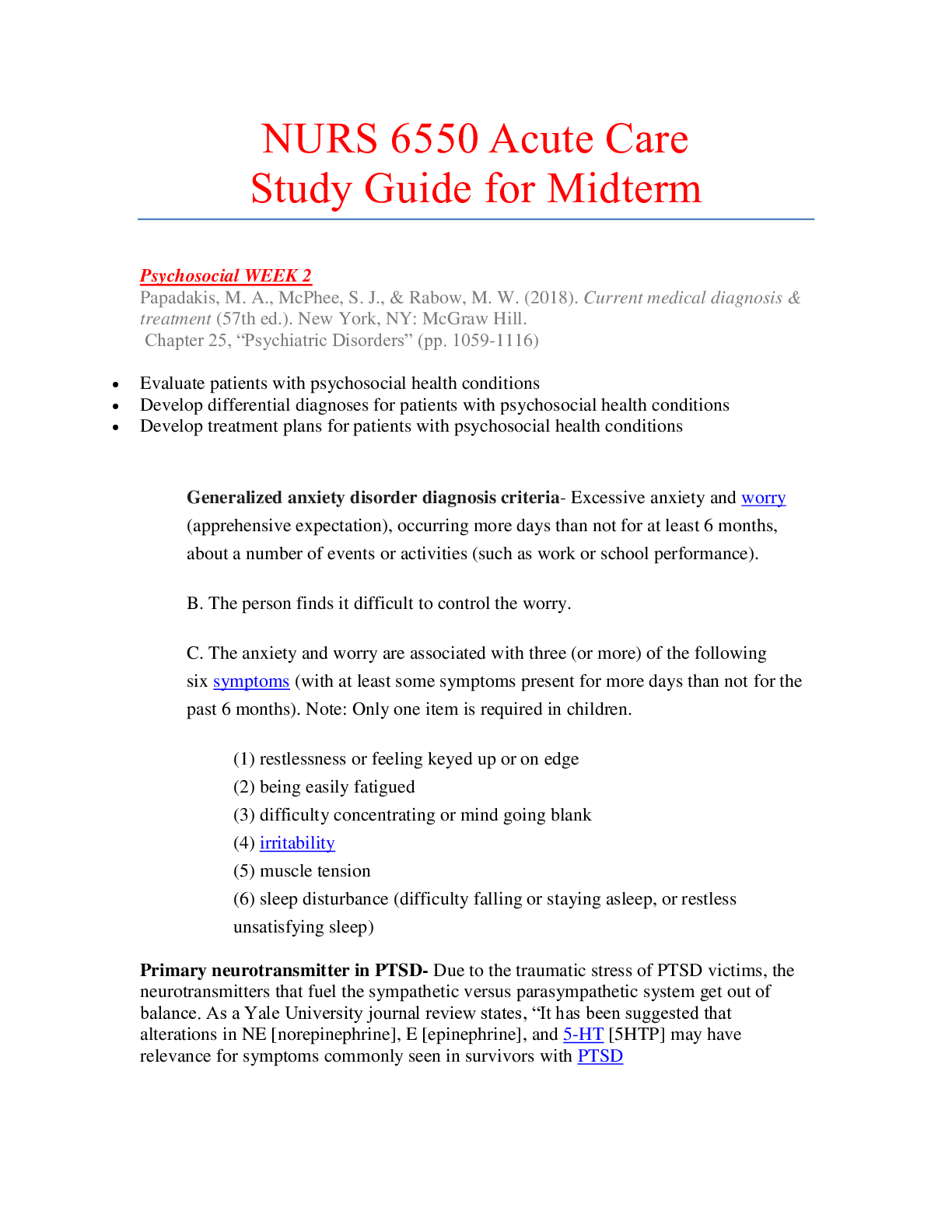
Buy this document to get the full access instantly
Instant Download Access after purchase
Add to cartInstant download
Reviews( 0 )
Document information
Connected school, study & course
About the document
Uploaded On
Jul 15, 2020
Number of pages
42
Written in
Additional information
This document has been written for:
Uploaded
Jul 15, 2020
Downloads
0
Views
115

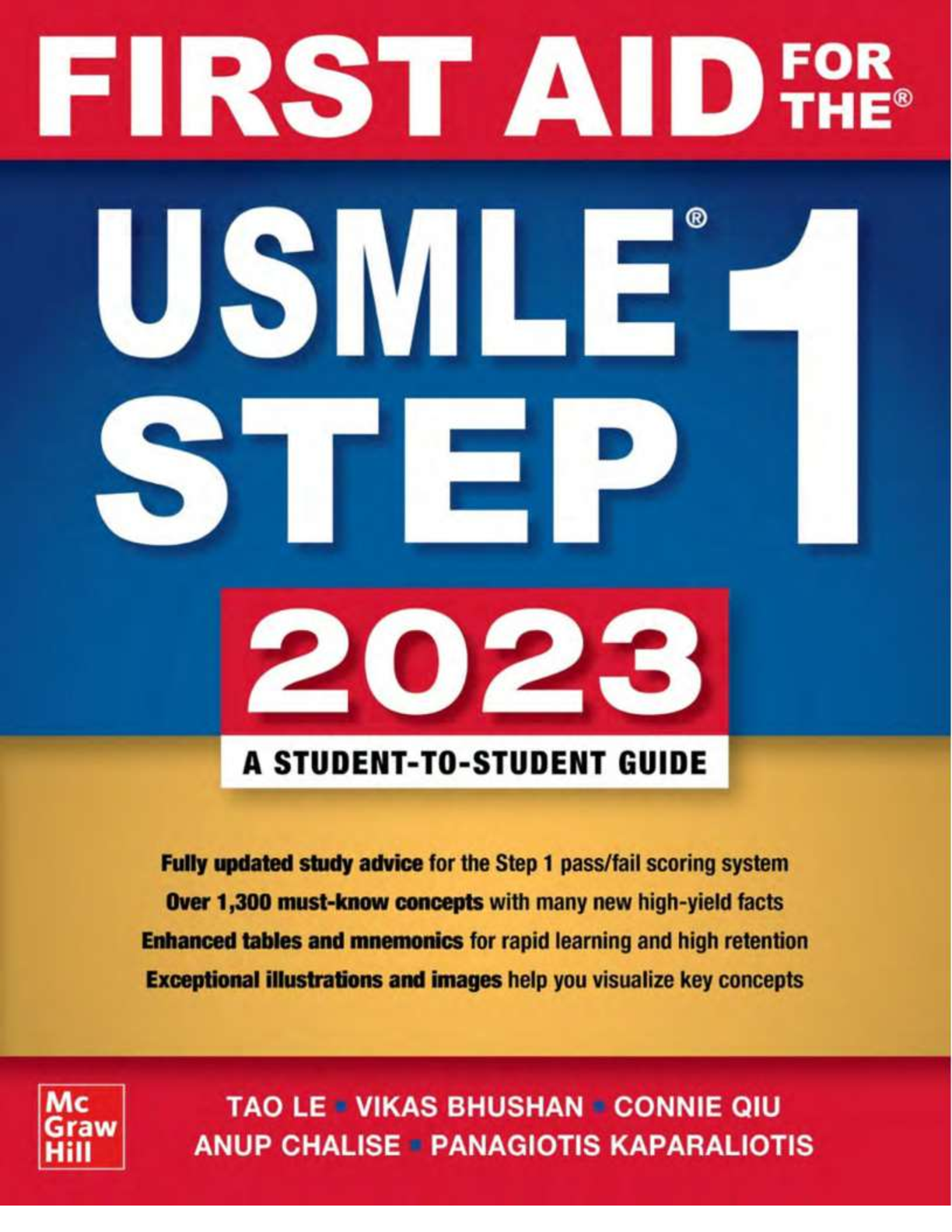

-3-168.png)
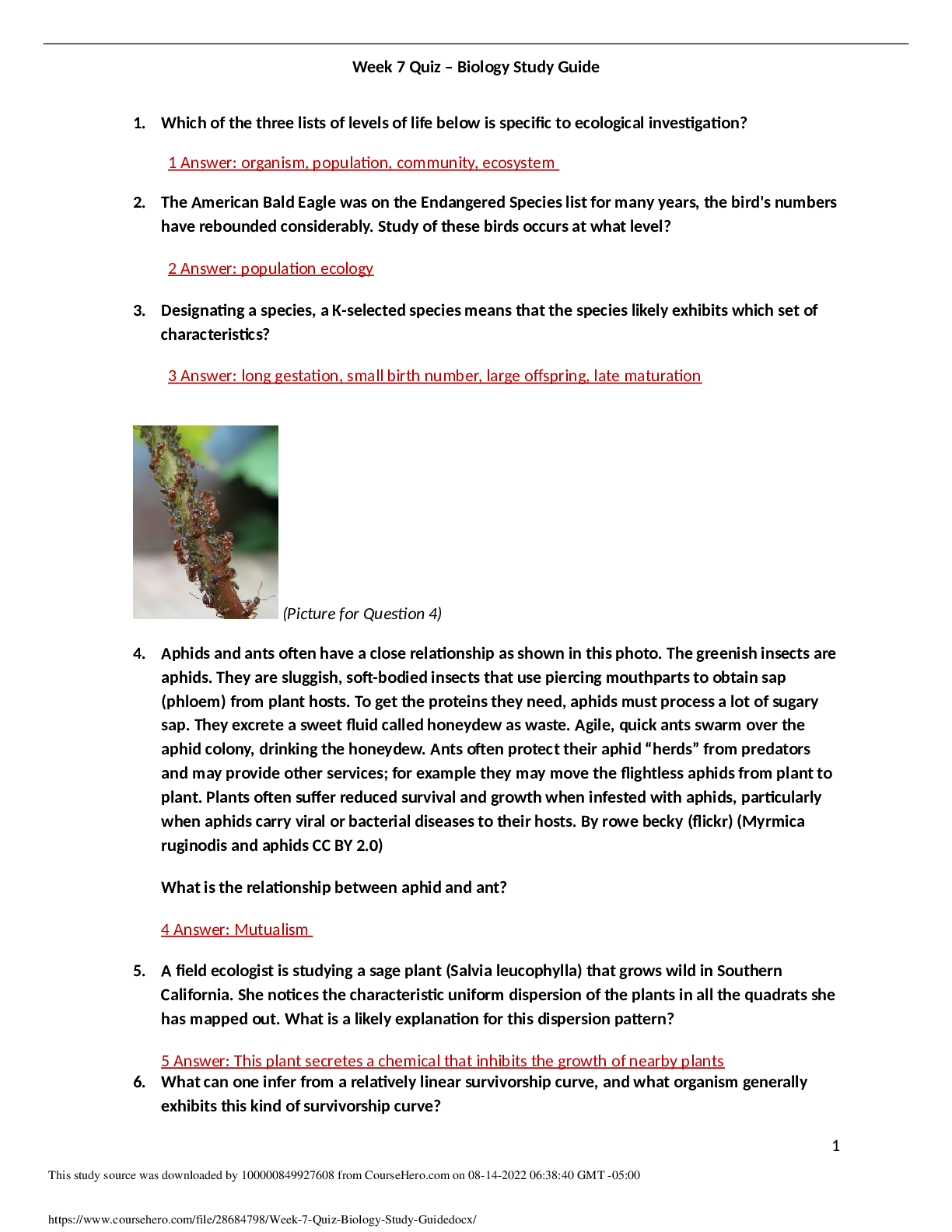
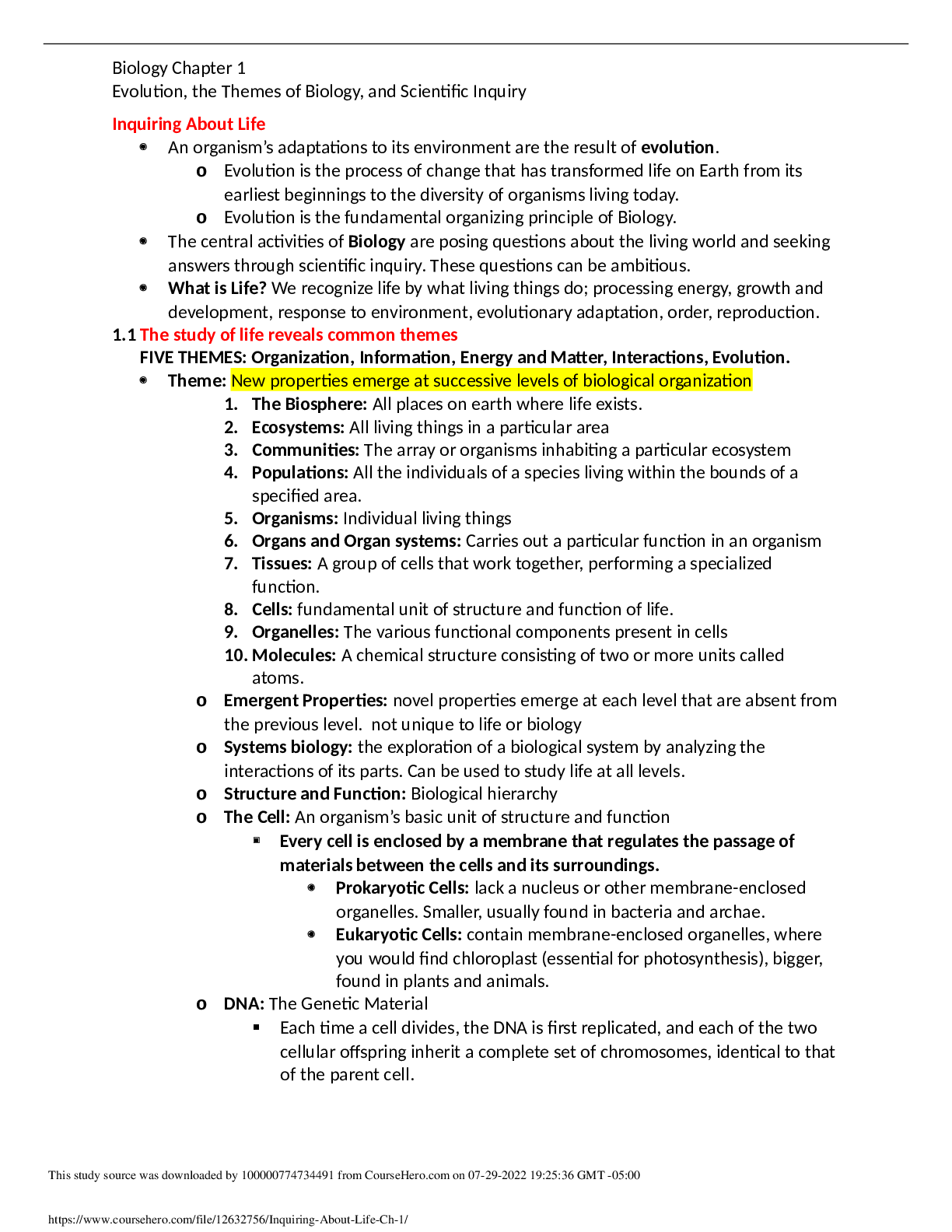



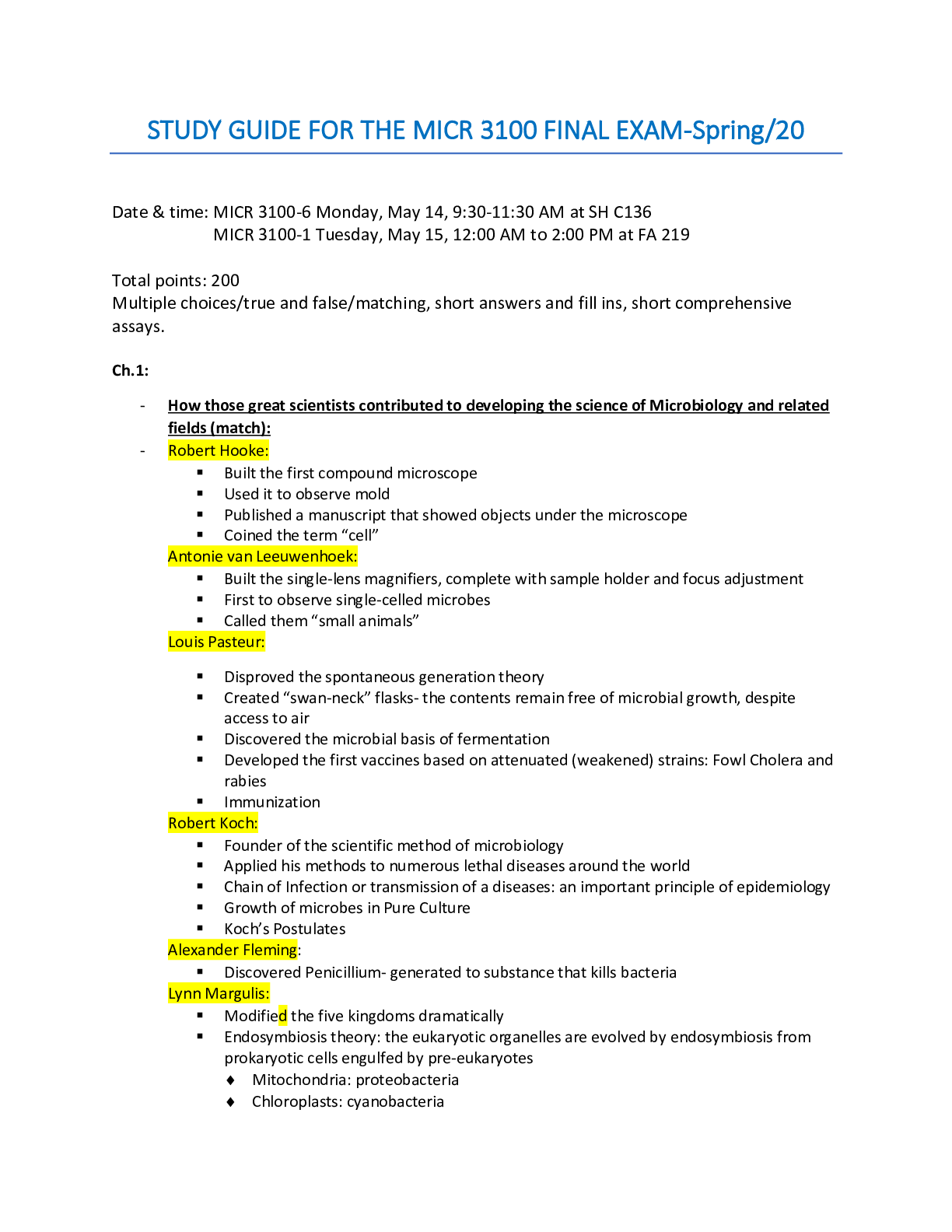


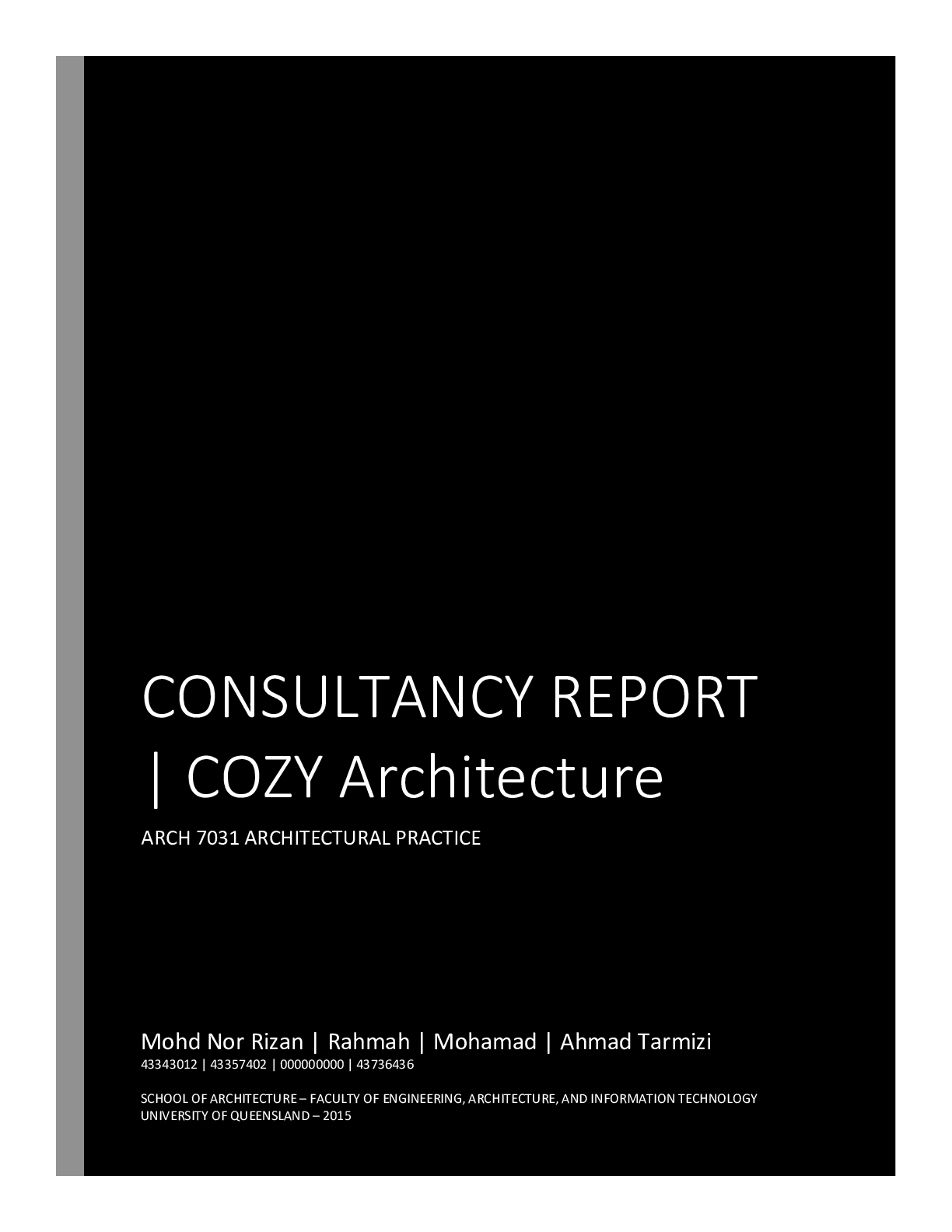
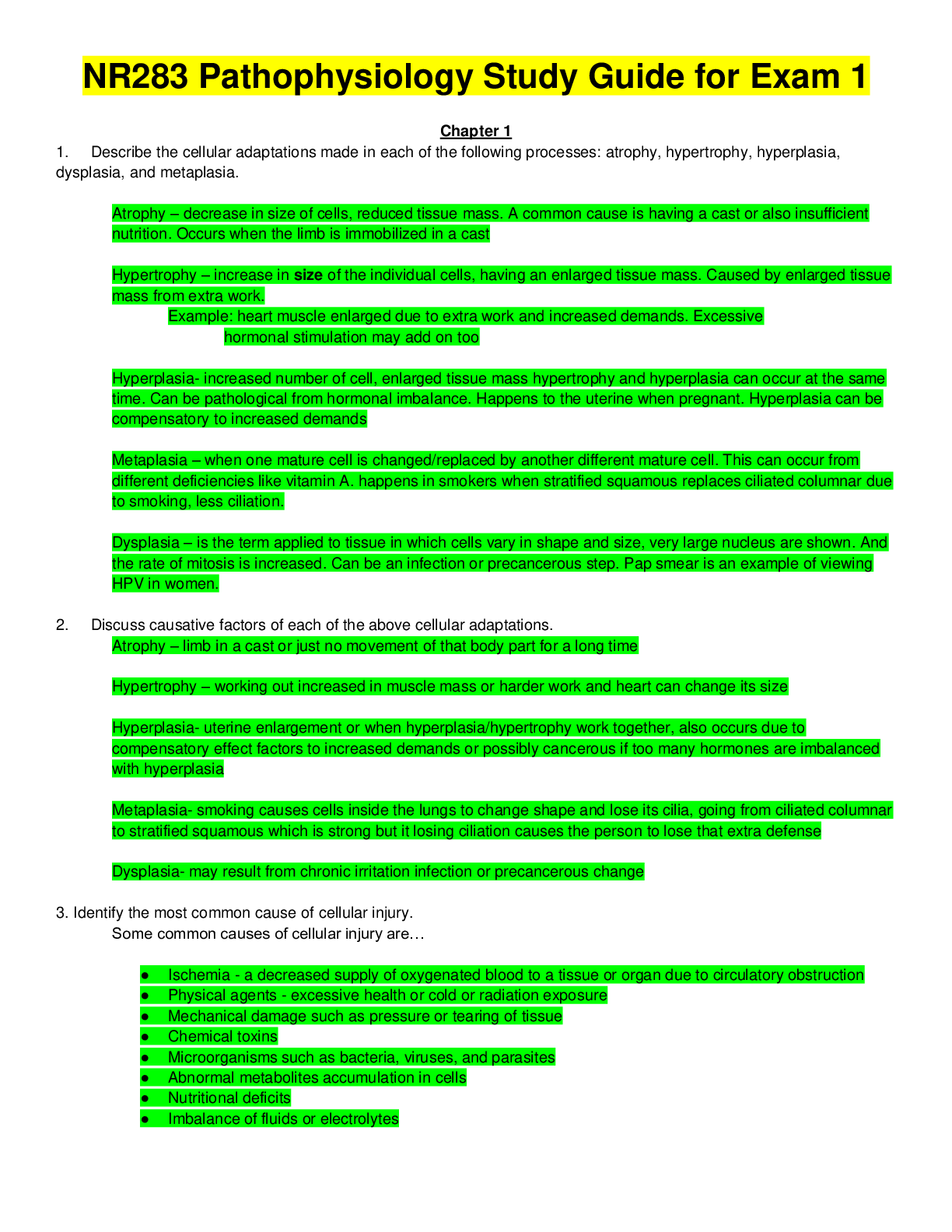
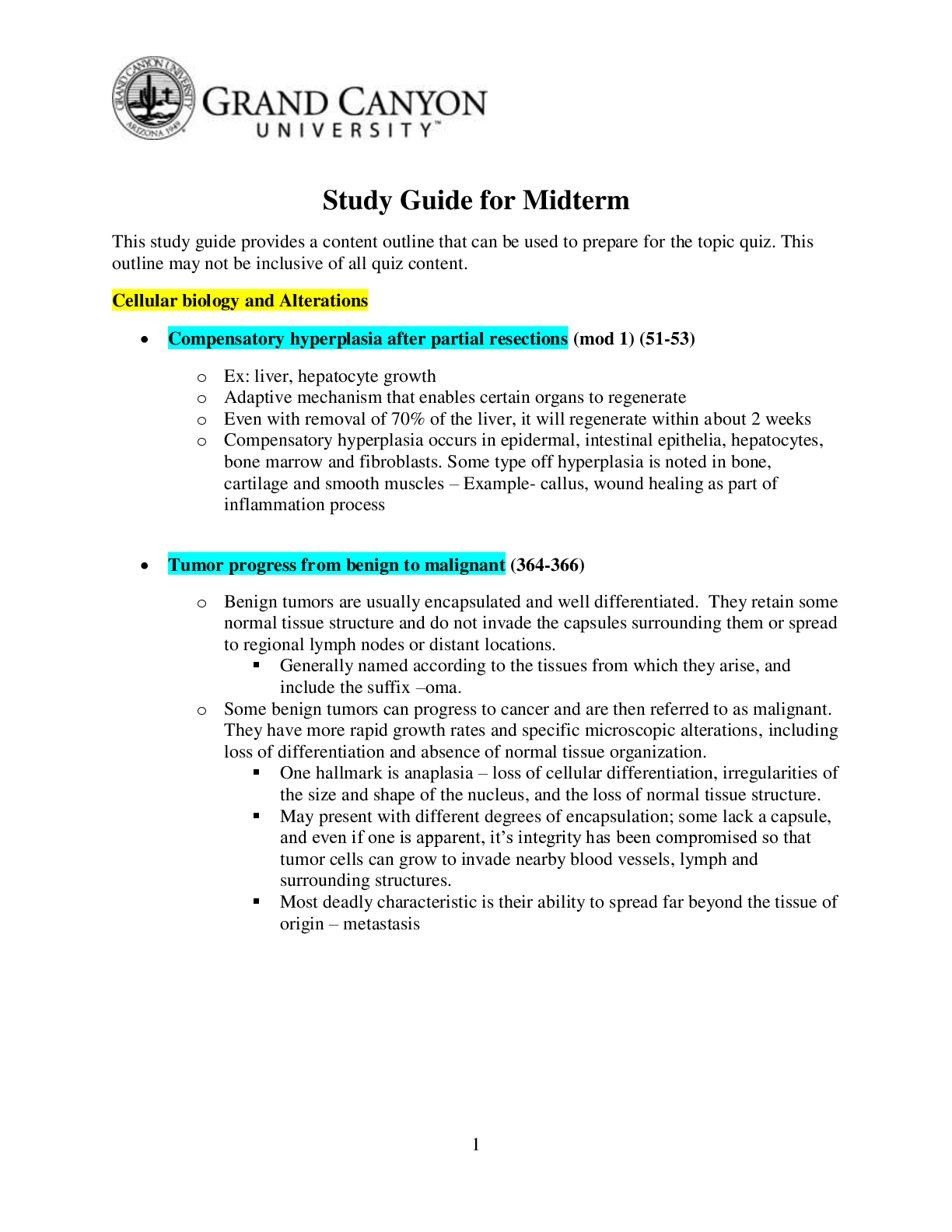


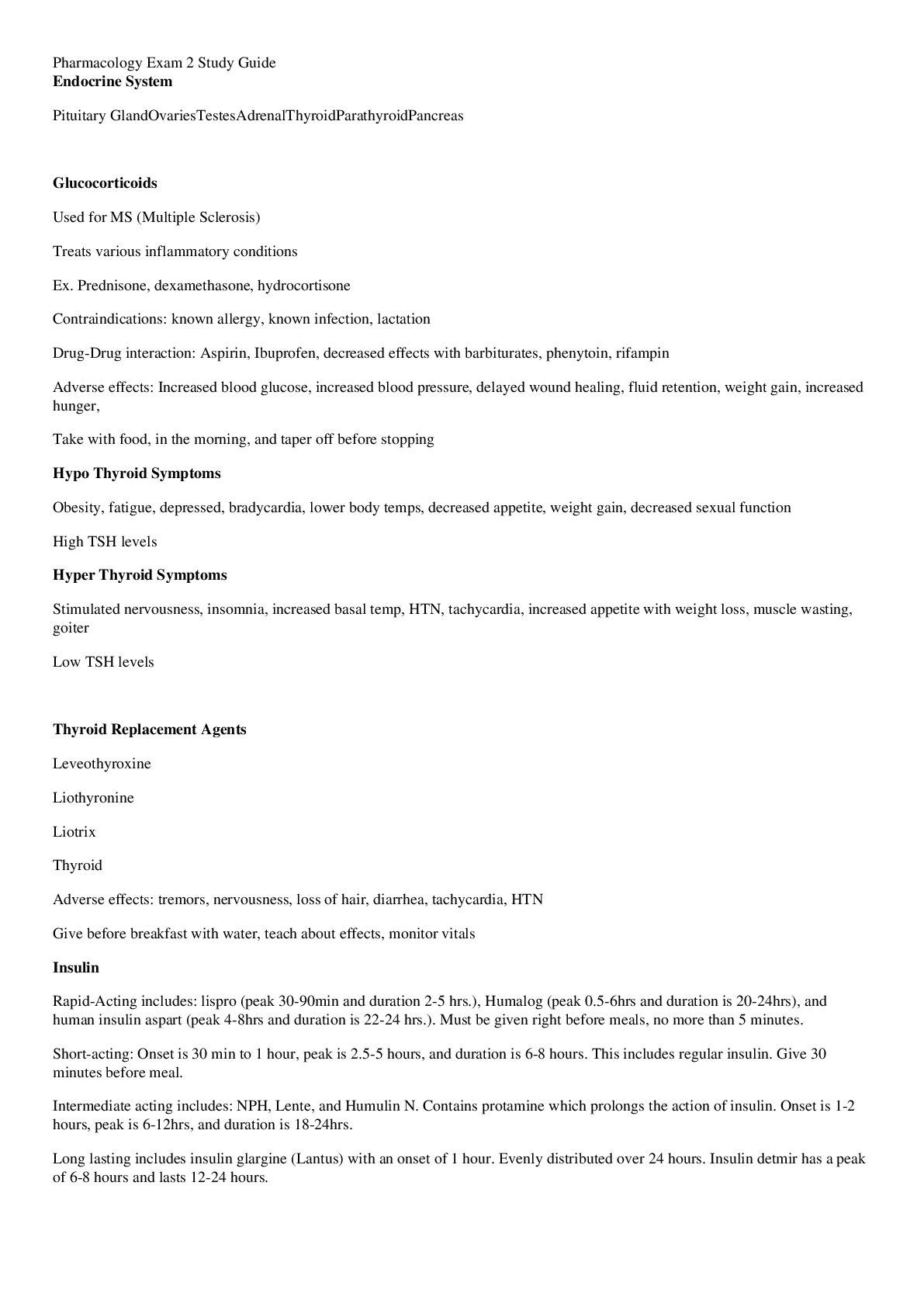
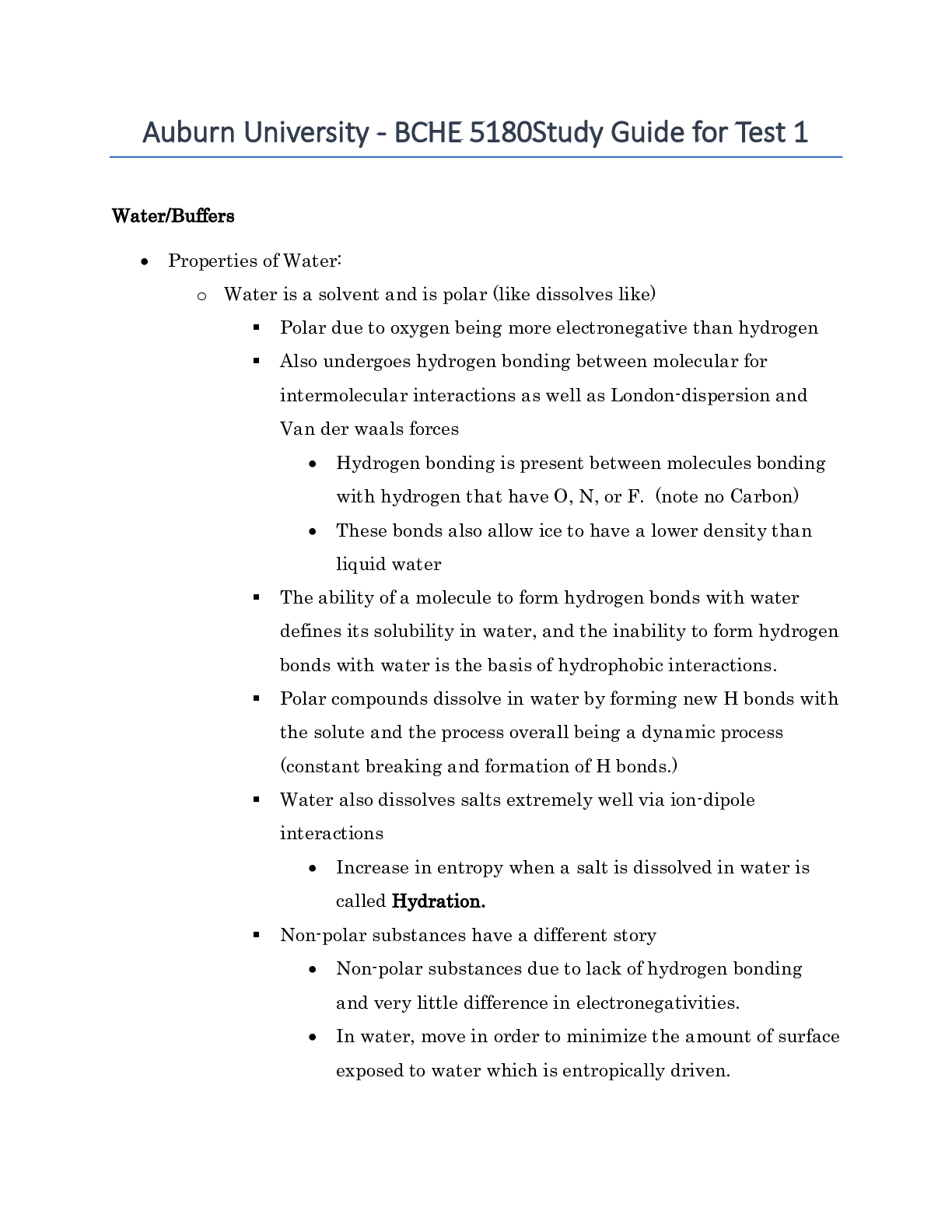
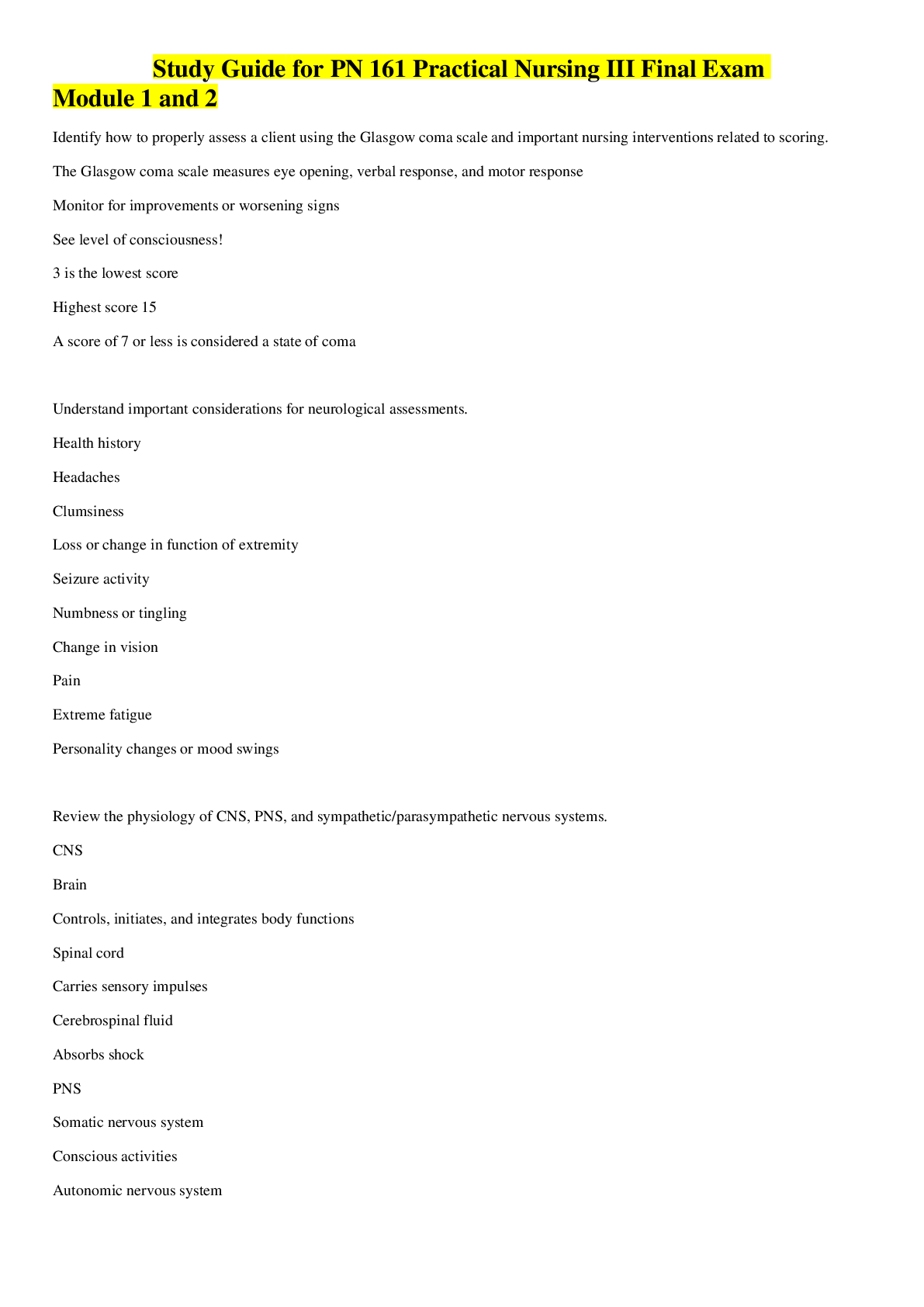

.png)
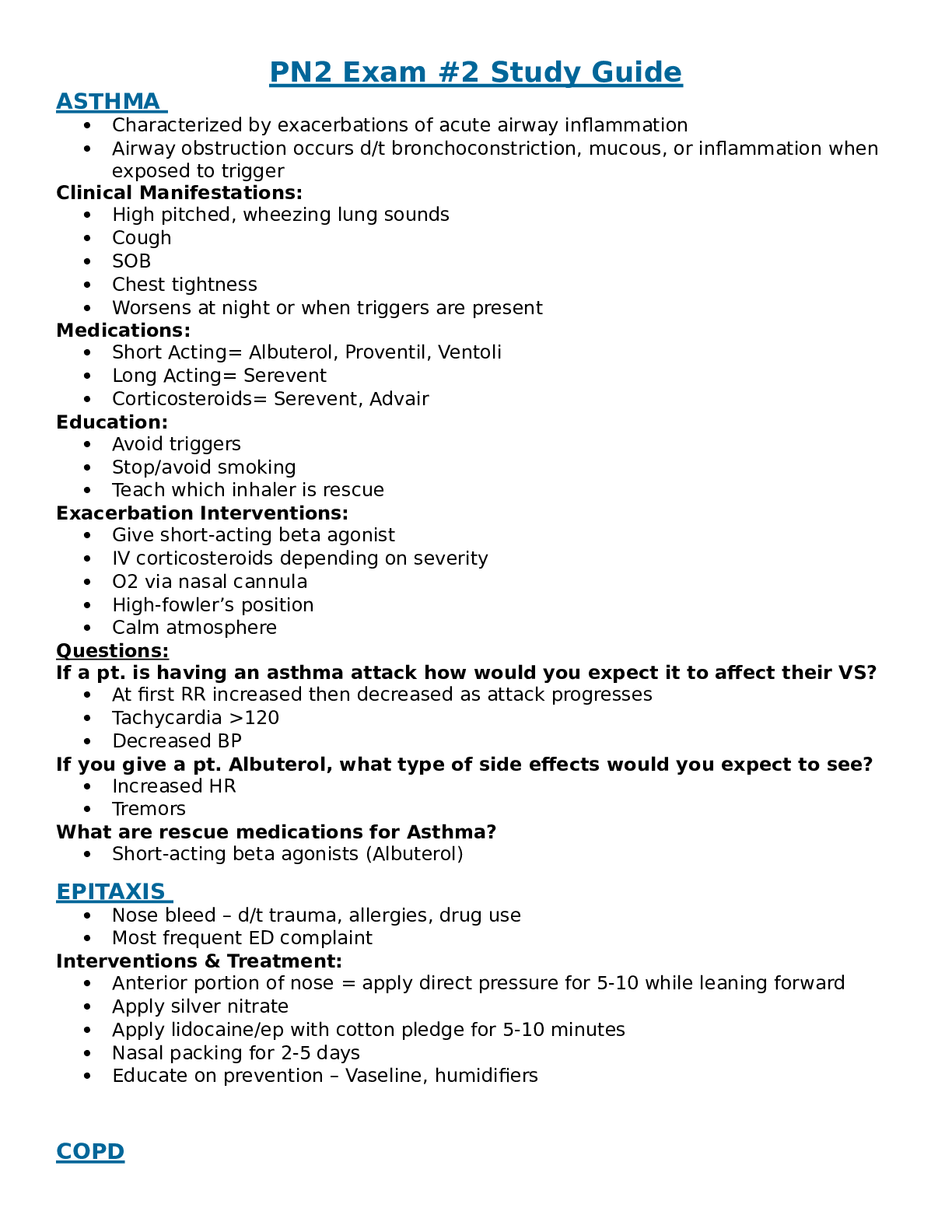
.png)


